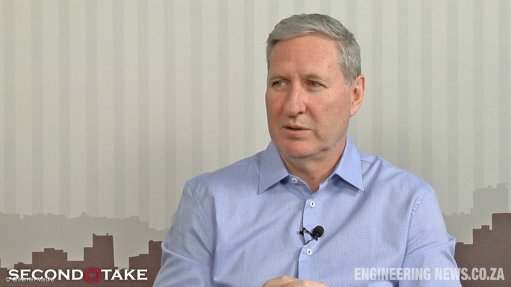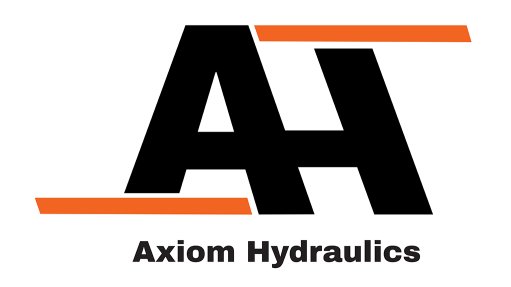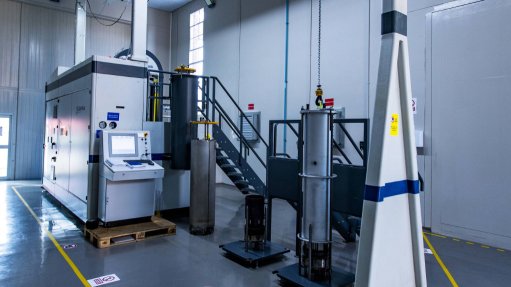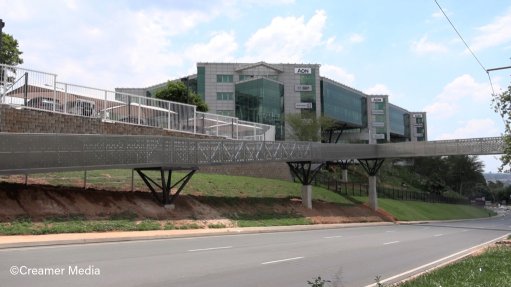Opinion: The superpower driving the future of low-carbon electricity
In this opinion article, Sola Group executive director Dom Wills discusses how the modularity that has underpinned the rapid growth of solar PV, is also driving the sharp fall in battery costs. He argues that if this rapid progress continues, the cheapest, fastest growing form of clean electricity will gain the ability to reshape itself to follow the electrical load.
The world’s most renowned scholar in the field of analysing megaprojects has spent decades building a database of over 16 000 supersized ventures. Oxford Professor Bent Flyvbjerg goes as far back as 1910 gathering insight on a diverse range of projects from bridges and subsea tunnels, dams, planes, telescopes, skyscrapers and the iPod. According to his book “How big things get done”, he notes that 91% of projects go over budget, over schedule, or both. And of the successful 9%, the vast majority don’t achieve their intended benefits. In fact, when considering cost, time and project benefits, Flyvbjerg concludes that a miniscule 0.5% of all the megaprojects in history can be considered successful.
A further interesting conclusion is that there is one class of project that stands above all as the most consistently successful. This is solar PV. The statistics show that solar farms have the lowest risk of failure by a considerable margin.
There is a kind of secret sauce when it comes to getting things done at mega scale in record time and within budget. Some of the qualities are fairly traditional: experience, high quality and focused teams, extreme planning, realistic budget and forecasting, among others. But there is one further quality that has a very powerful effect on the success of mega projects. And this quality is driving the future of electricity: modularity.
Modularity is a superpower. It’s a concept where something large and complex can be broken down into many smaller identical units, with a specific function. The advantage lies in that smaller units can be built, tested, refined, adapted, improved repetitively allowing many experimentation and learning iterations. High speed learning loops also reduce performance risk as products can be quickly and cheaply refined to the point of perfection.
In the context of electricity, we’ve seen the effect of this in the manufacture of solar PV panels with rapid increases in production scale and rapid declines in cost. Solar panels cost a tenth now of what they did ten years ago. In 2014, the world installed 40 GW of solar PV – this figure has increased over 13-fold in 2024 to 550 GW. Thirteen times more volume at one tenth of the cost in ten years. This is the power of modularity.
The modularity in PV also continues beyond manufacturing to logistics and construction. Solar PV modules are dimensioned to fit as many as possible into a standard shipping container. This means that standard shipping vessels can be used to move vast quantities around the globe. They can also be transported on land by standard trucks on normal roads that don’t need abnormal load permissions. Once they are on site, the pallets are transportable by standard telehandlers and can be installed by trained unskilled workers. The installation speed gains are rapid after just a few weeks. There are projects in South Africa where 5 000-plus solar panels are installed in a single day.
This powerful rise in scale and decreased cost is reflected in the global electricity statistics. Solar PV showed the highest increase from 2023 to 2024 of all electricity sources. More than five times nuclear and 2.5 times wind, hydro and gas. This growth has resulted in global emissions from electricity being stable for the first time ever and predicted to decline over the next two years.
Global electricity growth, however, is changing. We are entering ‘The new Age of Electricity’ where electric demand is increasing because we are using electricity for things that we didn’t before. We need electricity more than ever. Electric transport, increased heating (heat pumps instead of gas) and cooling (rise in global temperatures), the rapid deployment of data centres for storage and AI hyperscale computation and the increase in 5G connectivity are all major drivers.
But even at a global installation rate of 30-plus panels per second in 2024, solar PV created an additional 480 TWh in 2024 (wind and hydro takes it to 840 TWh), while the world’s electricity demand ramped up by 1 180 TWh. Clean energy couldn’t keep up. And to make matters worse, even if we were able to match the demand increases, or exceed it, we still haven’t solved the sun’s inability to pierce clouds and shine at night.
The solution here lies back in the modularity concept from earlier. Large-scale solar PV deployment benefits from modularity right from the wallet-sized cell, module, shipping, installation and commissioning - making solar PV the fastest growing source of electricity in modern history.
The same modularity is in play within lithium ion storage products. This is because a battery can be broken down into lunch box sized 5-kg cells which perform the primary function of storing electrical energy. Tens, hundreds, thousands of these can be connected up to create a battery for a car, ship or grid substation. Similar to what we saw with solar PV modules, the quality, lifespan and affordability are improving rapidly as new technologies and chemistries are developed relatively quickly like, for exampl: substituting lithium in the cathode for more abundant sodium and using solid state electrolytes.
This development is reflected in the battery cost reduction over the past 10 years. They have dropped from $715 to well below $100 for a stored unit of energy. Modern batteries’ rated charge cycles and lifetime have also dramatically improved with more advanced materials and manufacturing. This is evident in CATL’s latest heavy vehicle Tectrans battery launch, which has an electric bus service life of 1.5-million kilometres.
This is important for electricity storage because the solution for diurnal and weather-related solar variation relies on low cost, long lifespan technology that can store and release large quantities of energy efficiently. If rapid progress continues in battery cell development, we could see the cheapest, fastest growing form of clean electricity gain the valuable ability to reshape itself and follow the electrical load. In traditional power systems terms, a clean energy plant like this could act as a baseload, mid-merit or peaker plant.
Currently, in South Africa, our cost of electricity is set by the regulator, Nersa, based on an application made by Eskom. The current tariffs that bulk electricity users pay have been increasing at hyperinflationary rates for nearly 20 years. At the same time, breakthrough progress has and continues to be made in clean generation and storage technologies. Solar PV farms with eight hours of battery storage can now sell time of use electricity at lower cost than Eskom’s bulk selling rate to its customers.
So while traditional electricity generation continues to rise in cost, in contrast, we see the exponential forces of modularity push the costs of new generation and storage down. And what comes from this is the kind of miraculous force that we need when faced with the task of powering the new electricity age while also replacing carbon emitting generation. I’m hopeful that we will soon see a day where 24-hour solar PV is not only cost effective, but also able to scale fast enough to reach the zero carbon dawn in time.
Wills has an Engineering PhD in wind turbine design from Stellenbosch University and has worked at Sola Group since 2010 helping it grow to a vertically integrated IPP owning and operating 600 MW of solar PV projects. He was CEO from 2017 to 2024 and is now an executive director.
Article Enquiry
Email Article
Save Article
Feedback
To advertise email advertising@creamermedia.co.za or click here
Comments
Announcements
What's On
Subscribe to improve your user experience...
Option 1 (equivalent of R125 a month):
Receive a weekly copy of Creamer Media's Engineering News & Mining Weekly magazine
(print copy for those in South Africa and e-magazine for those outside of South Africa)
Receive daily email newsletters
Access to full search results
Access archive of magazine back copies
Access to Projects in Progress
Access to ONE Research Report of your choice in PDF format
Option 2 (equivalent of R375 a month):
All benefits from Option 1
PLUS
Access to Creamer Media's Research Channel Africa for ALL Research Reports, in PDF format, on various industrial and mining sectors
including Electricity; Water; Energy Transition; Hydrogen; Roads, Rail and Ports; Coal; Gold; Platinum; Battery Metals; etc.
Already a subscriber?
Forgotten your password?
Receive weekly copy of Creamer Media's Engineering News & Mining Weekly magazine (print copy for those in South Africa and e-magazine for those outside of South Africa)
➕
Recieve daily email newsletters
➕
Access to full search results
➕
Access archive of magazine back copies
➕
Access to Projects in Progress
➕
Access to ONE Research Report of your choice in PDF format
RESEARCH CHANNEL AFRICA
R4500 (equivalent of R375 a month)
SUBSCRIBEAll benefits from Option 1
➕
Access to Creamer Media's Research Channel Africa for ALL Research Reports on various industrial and mining sectors, in PDF format, including on:
Electricity
➕
Water
➕
Energy Transition
➕
Hydrogen
➕
Roads, Rail and Ports
➕
Coal
➕
Gold
➕
Platinum
➕
Battery Metals
➕
etc.
Receive all benefits from Option 1 or Option 2 delivered to numerous people at your company
➕
Multiple User names and Passwords for simultaneous log-ins
➕
Intranet integration access to all in your organisation

















